
Marie Antoinette was the last queen of France prior to the French Revolution. She was born an archduchess of Austria, and was the penultimate child and youngest daughter of Empress Maria Theresa and Emperor Francis I. She became dauphine of France in May 1770 at age 14 upon her marriage to Louis-Auguste, heir apparent to the French throne. On 10 May 1774, her husband ascended the throne as Louis XVI and she became queen.

Louis XVI was the last king of France before the fall of the monarchy during the French Revolution.

Louis XVII was the younger son of King Louis XVI of France and Queen Marie Antoinette. His older brother, Louis Joseph, Dauphin of France, died in June 1789, a little over a month before the start of the French Revolution. At his brother's death he became the new Dauphin, a title he held until 1791, when the new constitution accorded the heir apparent the title of Prince Royal.

Louis XVIII, known as the Desired, was King of France from 1814 to 1824, except for a brief interruption during the Hundred Days in 1815. He spent 23 years in exile from 1791: during the French Revolution and the First French Empire (1804–1814), and during the Hundred Days.
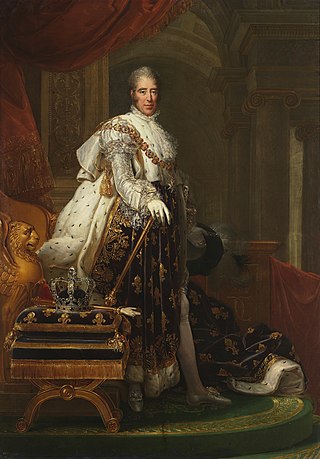
Charles X was King of France from 16 September 1824 until 2 August 1830. An uncle of the uncrowned Louis XVII and younger brother of reigning kings Louis XVI and Louis XVIII, he supported the latter in exile. After the Bourbon Restoration in 1814, Charles became the leader of the ultra-royalists, a radical monarchist faction within the French court that affirmed absolute monarchy by divine right and opposed the constitutional monarchy concessions towards liberals and the guarantees of civil liberties granted by the Charter of 1814. Charles gained influence within the French court after the assassination of his son Charles Ferdinand, Duke of Berry, in 1820 and succeeded his brother Louis XVIII in 1824.

The Affair of the Diamond Necklace was an incident from 1784 to 1785 at the court of King Louis XVI of France that involved his wife, Queen Marie Antoinette.
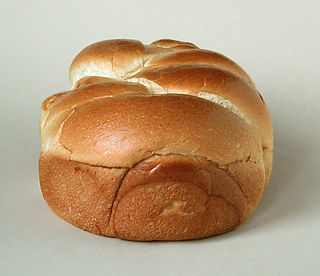
Brioche is a pastry of French origin whose high egg and butter content gives it a rich and tender crumb. The chef Joël Robuchon described it as "light and slightly puffy, more or less fine, according to the proportion of butter and eggs". It has a dark, golden, and flaky crust, frequently accentuated by an egg wash applied after proofing.

Yolande Martine Gabrielle de Polastron, Duchess of Polignac was the favourite of Marie Antoinette, whom she first met when she was presented at the Palace of Versailles in 1775, the year after Marie Antoinette became the Queen of France. She was considered one of the great beauties of pre-Revolutionary society, but her extravagance and exclusivity earned her many enemies.
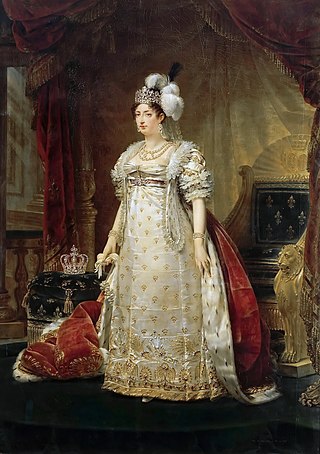
Marie-Thérèse Charlotte was the eldest child of King Louis XVI and Queen Marie Antoinette of France, and their only child to reach adulthood. In 1799 she married her cousin Louis Antoine, Duke of Angoulême, the eldest son of Charles, Count of Artois, henceforth becoming the Duchess of Angoulême. She was briefly Queen of France in 1830.
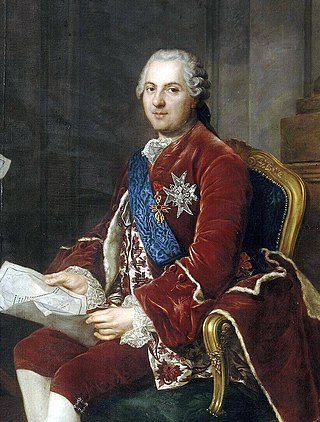
Louis, Dauphin of France was the elder and only surviving son of King Louis XV of France and his wife, Queen Marie Leszczyńska. As a son of the king, Louis was a fils de France. As heir apparent, he became Dauphin of France. Although he died before ascending to the throne himself, all three of his sons who made it to adulthood were to later rule France: Louis XVI, Louis XVIII and Charles X (1824–1830).

Maria Josepha Karolina Eleonore Franziska Xaveria of Saxony was Dauphine of France through her marriage to Louis, the son and heir of Louis XV. Marie Josèphe was the mother of three kings of France, Louis XVI, Louis XVIII and Charles X, as well as Madame Élisabeth.
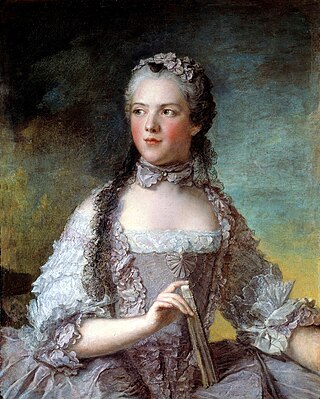
Marie Adélaïde de France was a French princess, the sixth child and fourth daughter of King Louis XV and Queen Marie Leszczyńska.
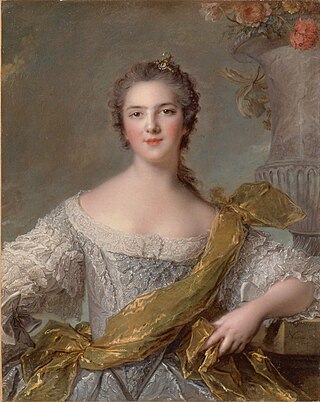
Victoire of France was a French princess, the daughter of King Louis XV and the popular Queen Marie Leszczyńska. She was named after her parents and Queen Maria Theresa, her great-great-grandmother and the consort of Louis XIV of France.

Marie Joséphine of Savoy was a princess of France and countess of Provence by marriage to the future King Louis XVIII of France. She was regarded by Bourbon royalist Legitimists as the titular 'queen of France' when her husband assumed the title of king in 1795 upon the death of his nephew, the titular King Louis XVII of France, until her death. She was never practically queen, as she died before her husband actually became king in 1814.

Fashion in France is an important subject in the culture and country's social life, as well as being an important part of its economy.
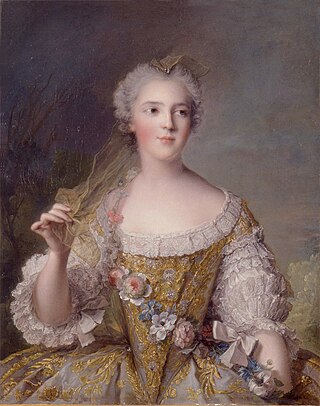
Sophie Philippine Élisabeth Justine of France was a French princess, a fille de France. She was the sixth daughter and eighth child of King Louis XV of France and his queen consort, Marie Leszczyńska. First known as Madame Cinquième, she later became Madame Sophie. She and her sisters were collectively known as Mesdames. In 1777, Sophie and her elder sister Adélaïde were both given the title Duchess of Louvois.
"Let them eat cake" is a translation of the French "qu'ils mangent de la brioche", typically attributed to Marie Antoinette.

Queen Marie Antoinette of France is best remembered for her legendary extravagance and her death: she was executed by guillotine during the Reign of Terror at the height of the French Revolution in 1793 for the crime of treason. Her life has been the subject of many historically accurate biographies and the subject of romance novels and films.

Marie Thérèse Louise of Savoy, Princess de Lamballe was a member of the Savoy-Carignano cadet branch of the House of Savoy. She was married at the age of 17 to Louis Alexandre de Bourbon-Penthièvre, Prince de Lamballe, the heir to the greatest fortune in France. After her marriage, which lasted a year, she went to the French royal court and became the confidante of Queen Marie Antoinette. She was killed in the massacres of September 1792 during the French Revolution.
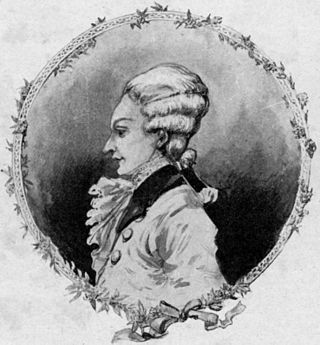
Léonard-Alexis Autié, also Autier, often referred to simply as Monsieur Léonard, was the favourite hairdresser of Queen Marie Antoinette and in 1788–1789 founded the Théâtre de Monsieur, "the first resident theatre in France to produce a year-round repertory of Italian opera."




















